Explore Angkor tour – The Angkor Explore Live Adventure | Your 2-day Private Guided Journey Through Angkor [in a small group of no more than 8 people].
Explore Angkor tour itinerary of Day 1: The Angkor Grand Loop | Angkor Grand Loop from Siem Reap to explore various lesser-known temples such as Pre Rup Temple, Banteay Srei Temple, East Mebon Temple, Ta Som Temple, Neak Pean and Preah Khan Temple!
Explore Angkor tour itinerary of Day 2: The Angkor Small Loop | the small loop consists of Angkor Wat, Angkor Thom (Bayon, Baphuon, Phimeanakas and Terrace of the Elephants sightseeing), the Victory Gate, the walk to the Khmoch Gate (Gate of the Dead), Thommanon and Chau Say Tevoda temple, Ta Keo, Ta Prohm temple, and Prasat Kravan temple.
> How to book this Private 2-day Explore Angkor tour adventure? Select the number of guests in your private group.
>> For this Private Temples Tour, the price varies per group, not per person. <<
Itinerary and Guide for Visiting Angkor Wat Over the Course of Two Days
This Angkor Wat Itinerary for Two Days goes over a lot of different things, such as a short history of the UNESCO World Heritage Site, how to get around the area, recommended stops, and more.
Private 2-day Explore Angkor Tour Adventure Itinerary – Key Details
- Location: Angkor Wat National Park – Banteay Srei village – Siem Reap countryside – Angkor Thom
- Duration:
- Day 1 [9 hours]
- Day 2 [9-10 Hours]
- Departure Time:
- Day 1 – at your Hotel lobby: 7:30 AM – 8:00 AM
- Day 2 – at your Hotel lobby: 7:30 AM – 8:00 AM
- Return Time:
- Day 1 Return Time: 6:30 PM (approx.)
- Day 2 Return Time: 6:30 PM (approx.)
- Live Guide: Yes
- Instant Confirmation
- Mobile Voucher Accepted
- Printed Voucher Accepted
- Pick-Up and Drop-Off Service: at the Lobby of your Hotel
- There will be a maximum of 8 people on this tour/activity. [If your group is more than 8 people, contact us directly and we will favor you with a customized price].
- This magnificent temple tour requires a current 3 days Angkor Pass, which costs $63 per person. You can purchase tickets prior to the commencement of the tour; however, your tour guide will assist you in acquiring a ticket before seeing the Angkor Temples.
Private 2-day Explore Angkor tour adventure tour highlights:
Pre Rup Temple ▷ Banteay Srei Temple ▷ East Mebon Temple ▷ Ta Som Temple ▷ Neak Pean ▷ Preah Khan Temple >>> Angkor Wat Temple ▷ Angkor Thom ▷ Bayon Temple ▷ Victory Gate ▷ Gate Of The Dead ▷ Thommanon Temple ▷ Chau Say Tevoda Temple ▷ Ta Keo ▷ Ta Prohm Temple ▷ Prasat Kravan Temple
Private 2-day Explore Angkor adventure tour includes a superb native guide and a small, intimate tour group.
Live Guide – Everything you need to really get up close and personal with the temples and their history, the stories they tell about the people who lived around them.
A local guide who speaks fluent English and has years of experience.
Stop guessing and wandering alone. It’s time to shine along with the beauty of the temples and the best spots to get wonderful photos of you and the sights you encounter. Follow your professional guide on your Explore Angkor tour!
What’s Included in the Price
✔️Ideal for evading crowds.
✔️ Transportation by luxury minivan to and from your hotel.
✔️ Tour Guide Who Is Fluent In English.
✔️ Ample Supply of Cold Water bottles.
✔️ Costs assessed by the community at large (aka local taxes).
✔️ Mobile ticket.
Explore Angkor Tour – The Angkor Explore Live Adventure | Hyper Benefits
✅ The right tour guide at Angkor Wat makes all the difference! Experience the World’s Largest and Most Ancient City and learn about Cambodia’s History with MySiemReaptours Guided Tour!
✅ The air-conditioned minivan is always used to drive visitors between the several temples at Angkor so that they don’t have to walk in the scorching heat.
✅ Enjoy unique opportunities to interact with local people and share their daily life through out this 2-day experience.
What’s Not Included
✘ Meals.
✘ All gratuities.
✘ Your Angkor temple pass.
What to Expect
Itinerary and Guide for Visiting Angkor Wat Over the Course of Two Days
The Angkor Wat Archeological Park, which is also known as the Angkor Wat Complex, is a great place to visit for a vacation if you’re interested in history, adventure, and beauty. Every year, more than a million curious people visit this interesting place to learn about a civilization that lived there more than a thousand years ago.
Angkor Wat is an essential stop on any trip through Cambodia and can be found just eight kilometers (five miles) to the north of Siem Reap. And with this Private 2-day Explore Angkor Adventure Itinerary, you’ll be able to navigate this archaeological site like a pro – leaving with a newfound understanding of the history of this ancient civilisation, an appreciation for the architectural splendor, and a sense of accomplishment for experiencing all the highlights that this incredible place has to offer.
Things You Should Be Aware Of Before Going to Angkor Wat
A ticket is required in order to enter the Angkor Temple Complex – How much are tickets to Angkor Wat in 2022?
- A single-day pass costs USD 37. (valid for 2 entries during 2 consecutive days now)
- 62 USD for a pass good for three days (valid for 5 entries during a period of 10 days now)
- The seven-day pass costs USD 72. (valid for 10 entries during a period of 30 days now)
PS: There is no group discount available. Free admission is granted to youngsters who have not yet reached their 12th birthday; however, parents must remember to provide their children’s passports at the ticket desk and ensure that their children carry their passports with them while within the temples.
*Quick Tip: As you can see, purchasing a 3-Day Pass rather than two 1-Day Passes will save you money in the long run, as you will be able to access even more activities and temples if you are staying in Siem Reap and planning a third tour to visit more about Angkor Archeological Park. The variables are infinite as there are so many temples and locations to visit. It’s your choice!
When the Angkor Complex Is Open to the Public
The majority of the temples in Angkor are open every day from 7:30 AM until 5:30 PM. However, in order to accommodate visitors at both sunrise and dusk, the following three temples are open for longer hours:
The iconic spot to watch the sunrise at Angkor Wat is open daily from 5:00 AM until 5:30 PM.
Phnom Bakheng is a temple that is located on a hill and is open from 5:00 in the morning until 5:30 in the afternoon. It is a favorite place to watch the sunset.
Because it is the only temple in Angkor that can be visited at either sunrise or sunset, Pre Rup is an excellent place to go if you want to get away from the throngs that are at Angkor Wat and Phnom Bakeng. Open from 5 AM-7 PM.
What You’ll Do
To provide you with some context, the word “capital” in the Khmer language of Cambodia is the equivalent of the English word “Angkor.” As you may already know or have reason to suspect, this location was originally the seat of government for the Khmer Empire. The Angkor Temple Complex spans across more than 400 acres and is home to many temples that were constructed more than 1,200 years ago.
Because there are so many temples to explore and so many acres of land to traverse, Angkor Wat has been divided into two halves for our convenience. On day one, we will visit the larger loop that includes fewer well-known temples, and on day two, we will visit the smaller loop that includes more well-known sites. For the time being, let’s concentrate on having a good time on Day 1.
The first day of two spent exploring Angkor Wat:
Explore Angkor tour Day 1 – Angkor Wat Grand Loop
Pre Rup Temple ▷ Banteay Srei Temple ▷ East Mebon Temple ▷ Ta Som Temple ▷ Neak Pean ▷ Preah Khan Temple
With the Big Loop Scenic Route, you will be visiting the more distant temples located around the complex’s grounds. The Small Loop takes up less ground but leads you to the most well-known sights; nevertheless, there is no need to worry about that because you will always be in the comfort of a modern air-conditioned minivan moving from one location to the other.
Pre-Rup Temple is the first destination.
The Temple is open from 5:00 AM till 7:00 PM daily.
The tranquil setting atop a modest mountain is where you’ll find the ancient temple of Pre Rup, which dates back to the 10th century. Climbing the extremely steep stairs that are given in order to obtain access will reward you with the nicest vistas. There are four temples located in each of the four corners, arranged in a pagoda-like pattern. This provides you with an uninterrupted view of the ruins and the majestic nature of this location as a whole. Because of its pristine position, this was by far one of our most favorite temples; in addition, it is an excellent spot from which to view either the sunrise or the sunset.
Pre Rup is a temple in Cambodia that is often compared to Angkor Wat due to its three central towers. The phrase “Turning the Body” is the meaning of the name Pre Rup, which alludes to a traditional form of cremation in which the outline of the deceased is traced in the cinders. This points to the possibility that the temple was also used as a royal crematorium at one point.
Because the grey sandstone used in the construction of the temple is not as hardy as the pink sandstone used in the construction of many of the other Angkor temples, the majority of the intricate carvings have been worn away by rain and erosion. In spite of this, the collapsing ruins lend an eerie air to the temple, which only serves to increase its appeal as a tourist destination.
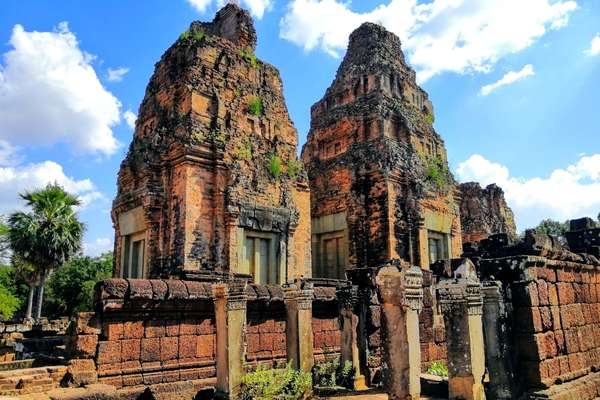
Temple of Banteay Srei, which is the second stop.
Banteay Srei is best visited as part of an Angkor tour that spans multiple days because it is situated around 25 kilometers to the northeast of the main temples that have been described in the preceding paragraph.
The majority of Banteay Srei’s construction is comprised of firm red sandstone, a material that can be carved just like wood and lends itself to the creation of intricate ornate wall carvings that have withstood the test of both time and the environment. In particular, the temple is well-known for the exquisite carvings that can be found on its pediments and lintels (a horizontal beam that runs between two posts) (triangular space above a rectangular doorway or opening).
One of the Extreme Advantages of Going on This Tour? It is highly recommended that you go to Banteay Srei, and if you decide to take a tour in a private vehicle, the journey to and from the temple only takes about half an hour, despite the distance of 25 kilometers in each direction (with the strong advantage of air conditioning).
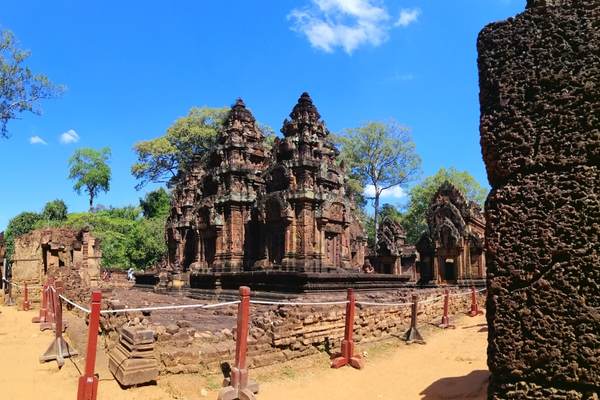
Stop No. 3: The Temple of East Mebon.
Opening hours: 7:30 AM to 5:30 PM.
The East Mebon temple was previously located on an island in the East Baray, which was once the largest and most significant reservoir in all of Angkor. Sadly, the East Baray dried up during the medieval period, which caused the temple to relocate. You will be fascinated and amazed by the beautiful lintel carvings from the Pre Rup style that were carved over a thousand years ago and can be found in this particular temple.
Stop number four: Ta Som.
Hours of Operation: 7:30 AM to 5:30 PM.
You’ll come upon the Ta Som Temple if you travel north of Neak Pean. This particular temple is well-known all throughout the world for its intricate architectural layout. Intricate stonework can be seen all around the Angkor Wat Complex, but this particular piece is among the most remarkable examples. They give the impression that they are consuming the entire temple since the walls have been penetrated by tree roots over the course of time. Indeed, a magnificent location to explore and enjoy.
Stop number five is the Neak Pean Temple.
Hours of Operation: 7:30 AM to 5:30 PM.
Neak Pean is located to the east of Preah Khan and is a temple that was constructed on an island that was originally a reservoir. This one-of-a-kind construction features an unusual circular platform that is encircled by a number of substantial lakes of water that have been constructed in a symmetrical method. You won’t take more than half an hour to explore this area, but the reflections off the water’s surface are an absolutely breathtaking sight to behold.
Stop #6: Preah Khan Temple.
Hours of Operation: 7:30 AM to 5:30 PM.
The highlight of the huge loop’s offers, without a doubt, is a visit to the Preah Khan Temple. This specific shrine, located within Angkor Wat and the largest flat temple that can be found there, was originally the location of an entire thriving city that is now in ruins. Preah Khan, constructed in the 12th century, was once the administrative and logistical hub of a massive organization with more than 100,000 employees and officials.
The second day exploring Angkor:
Explore Angkor tour Day 2 – Angkor Wat SMALL LOOP
Angkor Wat Temple ▷ Angkor Thom ▷ Bayon Temple ▷ Phimeanakas walk ▷ Victory Gate ▷ Gate of the Dead ▷ Thommanon Temple ▷ Chau Say Tevoda Temple ▷ Ta Keo ▷ Ta Prohm Temple ▷ Prasat Kravan Temple
Angkor Wat
When it comes to the temples in the Angkor complex, it should come as no surprise that Angkor Wat is the temple that is considered to be the crown jewel. And because we know that visiting Angkor Wat has been a dream of many of you for a very long time, we are here to assist you in turning that desire into a reality.
Phimeanakas walk
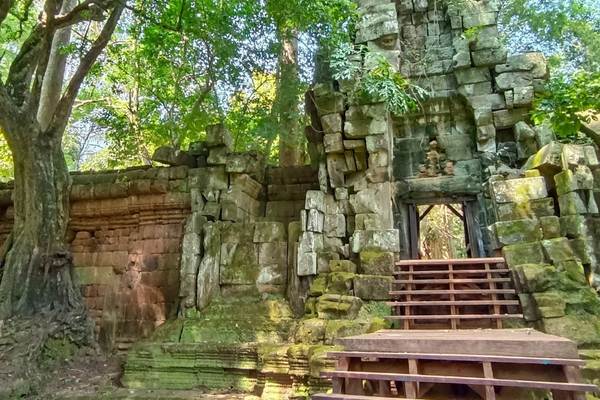
Thommanon and Chay Say Tevoda
Opening Hours: 7:30 AM – 5:30 PM
Both Thommanon and Chau Say Tevoda are wonderful representations of the classical Angkor Wat architecture, which was popular throughout the first half of the 12th century. The Thommanon Temple, also known as the Twin Temples in Nature, is embellished with well-preserved detailed carvings and beautiful lintels that display iconography of Vishnu and Shiva, the two gods to whom the temple is dedicated.
In addition, the temple is known for its twin temples in the natural environment. The etched gods or spirits, if you prefer, that the ancient Khmers used to worship were, without a doubt, among the most fascinating images that we came across during our exploration of the ruins.
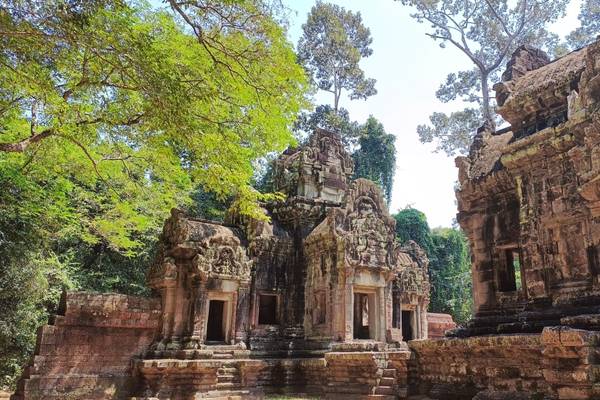
Ta Keo
Opening Hours: 7:30 AM – 5:30 PM
Sandstone was used for the first time in the construction of Ta Keo, making it one of the earliest examples of temple architecture. The building’s structural soundness is particularly distinctive.
In the second part of the 10th century, construction began on the pyramid that is now known as Ta Keo Temple. This structure has five storeys and is an astounding 50 meters high.
The first two levels of the building are made to look like a base, with walled gardens and courtyards. However, the structure’s top three levels feature a collection of smaller sanctuaries. During the Angkorian period, the ancient Khmer civilizations employed stone blocks to construct enormous temples.
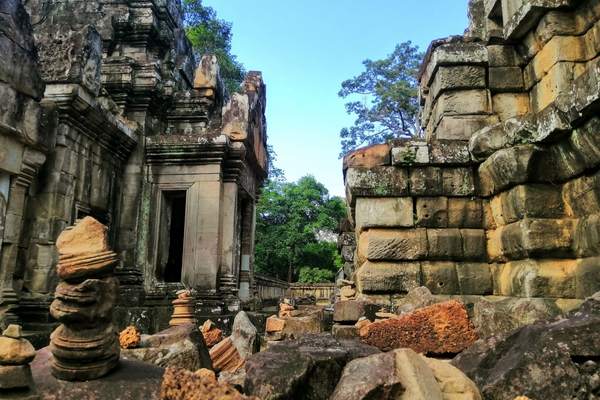
Ta Prohm Temple
The Ta Prohm Temple is open to the public from 7:30 AM to 5:30 PM.
Ta Prohm has more photographs taken of it than any other temple at Angkor. Ta Prohm, which was first built in 1186, was a Mahayana Buddhist monastery and university until the decline of the Khmer Empire in the 15th century.
The Cambodian jungle quickly engulfed Ta Prohm after that, leaving it in ruins for generations. Giant tree roots have made their way through broken stone walls and narrow passageways, destroying everything in their wake. After making its film premiere in 2001’s Tomb Raider, which starred Angelina Jolie, Ta Prohm gained notoriety. Everyone loves visiting this intriguing and otherworldly sanctuary.
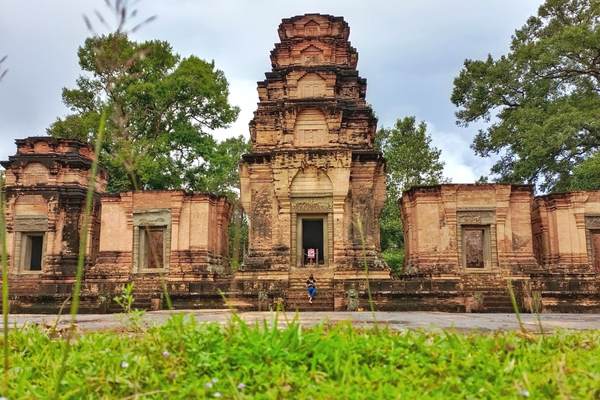
Important Information
Dress Respectfully!
- Exploring Angkor temples, visiting old holy sites, please be respectful. Wear a shirt that covers your shoulders, and you may wear trousers or knee-length pants or skirts.
For children over 12 years old, we charge the normal adult price.
Don’t Forget to Bring
➱ Exploring Angkor temples, bring sunscreen to keep your skin safe from the sun!
➱ Bring insect repellent — there are annoying bugs everywhere in Cambodia!
➱ Exploring Angkor temples, we all need to wear comfy walking shoes because there are some lovely walks to do in and around the temples!
Explore Angkor Tour – The Angkor Explore Live Adventure – The meeting point for your tour departure
Free Pick-up and drop-off Service: meet your driver at your Hotel lobby in Siem Reap.
- We can provide FREE hotel pickup service to ALL of Siem Reap’s city hotels. Remember to include in the check-out notes your hotel or accommodation details.
Pickup takes place between 7:30 and 8:00 a.m.
Because a more accurate time cannot be offered, we recommend that our customers arrive at the hotel lobby by 7:20 a.m.
Know Before You Go
- When you book, you receive a confirmation in your email with your tour e-ticket.
- Wheelchair access is not available.
- The dress code is relaxed and informal. When visiting old holy sites, please be respectful.
- It is advised to bring swimwear as well as an insect repellant.
- Please dress appropriately for all weather conditions.
- There is a maximum of 8 people per group booking. If your group is over 8 persons, you can start chatting with us to find the proper solution for your private tour.
- If you love to see also the page of the 1-day Angkor Wat GRAND LOOP Private tour!
- Accessible for strollers.
- It is not suggested for travelers who have back difficulties.
- These private group tours are usually inappropriate for newborns or young children. Please be aware there is a lot to walk!
- Travelers should be in good physical condition.
- The rates include any relevant government tax.
- All the rates listed above are net and in US dollars per group.
- The program schedule is subject to change without notice.
- The exact pick-up and drop-off times will be communicated via email.
- Dropping time cannot be guaranteed because it depends on the situation and traffic.
Why private small group tours exploring Angkor temples?
While it’s still big enough to have a great communal atmosphere, it’s still intimate enough that you may explore each spot on your own. Our small semi-private groups are never more than ten people.
Exploring Angkor temples, we continue to use this as the standard upper limit for the size of small groups because it has consistently been highlighted as an important selling element by all of our client’s testimonials. Because of the frequent positive feedback we’ve received from our guests regarding our ability to handle small groups, we’ve decided that this will be the typical maximum number of people in a group.
Explore Angkor – The Angkor Explore Live Adventure. This experience necessitates a minimum number of participants.
Why Local guides?
Follow in the footsteps of our tour guide. These local experts refer to your stunning tour destination as “home.”
- Get ready, relax and learn about local treasures, folklore, personalities, and historical information!
- Prepare to receive and discover what every other traveler misses when they simply search and surf the web.
Frequently Asked Questions About Sanitization of the
Private 2-day Explore Angkor Tour Adventure
What is the sanitization policy for the Private 2-day Explore Angkor Adventure tour?
- Travelers and workers can use hand sanitizer.
- Regular sanitization of transportation vehicles.
What precautions are being taken to preserve the health and safety of the staff during the Private 2-day Explore Angkor Adventure tour?
- Checks on the staff’s temperature at regular intervals.
- Staff members experiencing symptoms are eligible for a paid leave of absence.
Get only the Top Rated itineraries and the Top Rated tour experience at the best Value possible
✅ Professionally trained and licensed tour guides, operators, and drivers.
✅ Only carefully curated, tried-and-true adventures, selected trips that have been thoroughly tested.
✅ Daily departures and the ability to accommodate journeys planned at the last minute.
✅ Come together in a more intimate setting, smaller groups with like-minded people who share your perspective on things and getaways with a focus on environmental stewardship and community service.
Explore Angkor Tour – The Angkor Explore Live Adventure | Your 2-day Private Guided Journey Through Angkor:
Angkor temples tour, Angkor Thom, Angkor Thom sightseeing, Angkor Wat temple tour, Banteay Srei Temple, Banteay Srei Temple tour, Bayon temple, Chau Say Tevoda temple, East Mebon Temple, Exploring Angkor temples, Gate of the Dead, Neak Pean, Prasat Kravan temple, Pre Rup temple, Pre Rup temple tour, Preah Khan temple tour, Ta Keo temple, Ta Prohm temple, Ta Prohm temple guided tour, Ta Som Temple, Thommanon temple.
Follow Explore Angkor Private tour and MySiemReapTours.com on Tumblr!
Follow Explore Angkor Private tour and MySiemReapTours.com on Twitter!
Follow Explore Angkor Private tour and MySiemReapTours.com on Instagram!
–
PS: In the interest of full disclosure, this itinerary, “Explore Angkor Tour| Your 2-day Private Guided Journey Through Angkor,” contains a relaxed pace itinerary indication. The tour guides and our team continuously test the itinerary. If you make the purchase, we recommend that you be well aware that the itinerary has always been repeated with the success and satisfaction of our clients, as long as you carefully follow the timelines instructed by your tour guide.
We can continue delivering you free travel guidance and views.
If you found the content valuable and chose to participate in our tour itinerary, then you are amazing, and we are grateful to you for doing so.
PSS: How long does it take to explore Angkor Wat?
Some of the smaller temples can be visited in less than an hour, but larger temples, like Angkor Wat, may require two hours to explore.
How do I explore Angkor Wat?
Sightseeing with a tour van is the most pleasant way to see Angkor, but it is also the most expensive choice. Sitting comfortably inside an air-conditioned van, you’ll travel from Siem Reap to Angkor and then from one temple to the next. As you go around, a tour guide will explain the history of each location you visit. The price depends on what is included and whether you choose a private or shared trip.
We know this might be difficult for some of you to internalize, especially if you are coming from Scandinavia or England, but we must strongly warn you to be very careful when crossing the streets in Siem Reap. Walking the downtown streets and riverfront is excellent, but please be aware of oncoming traffic when crossing the street.
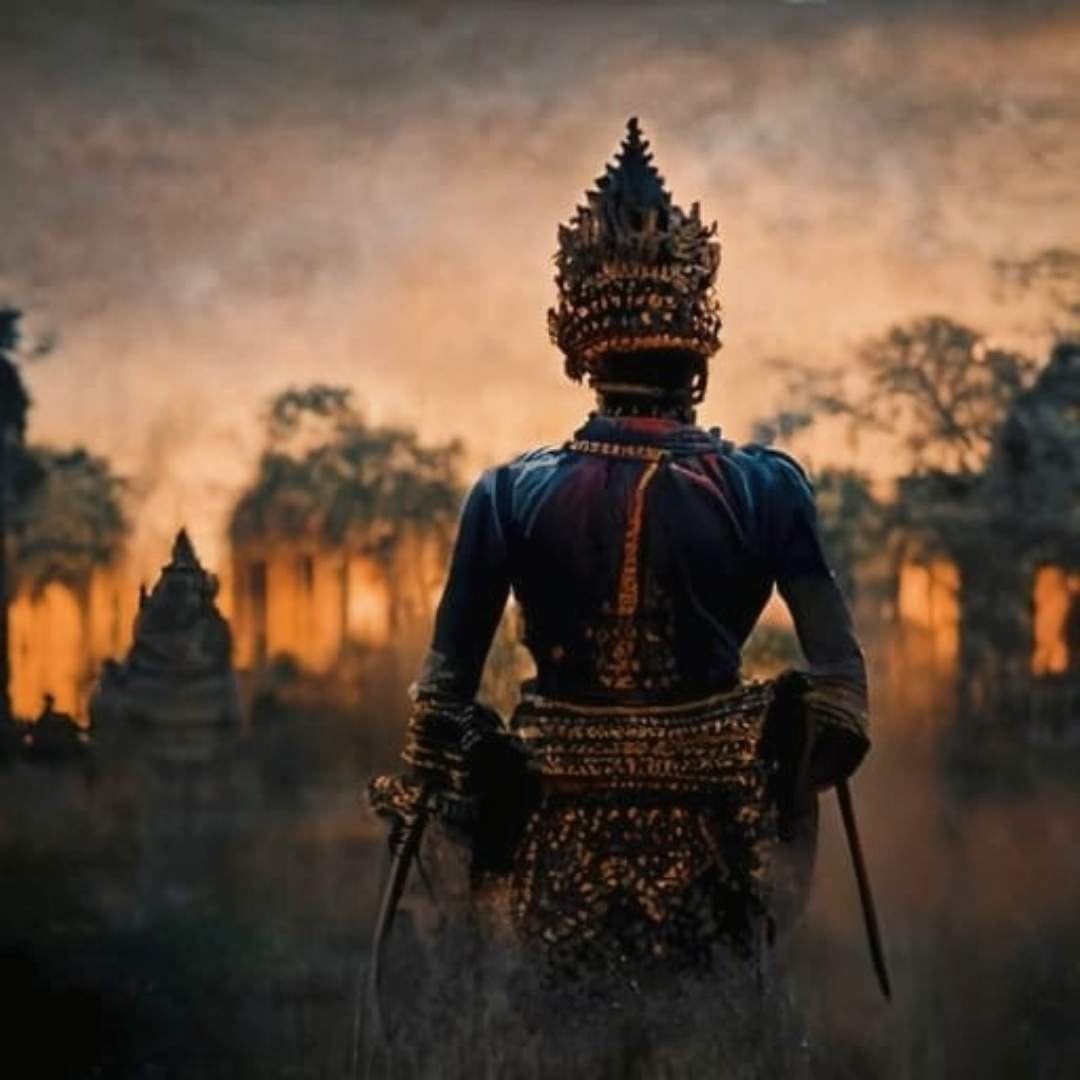
![Explore Angkor - The Angkor Explore Live Adventure Your 2-day Private Guided Journey Through Angkor [in a small group of no more than 8 people] Explore Angkor - The Angkor Explore Live Adventure Your 2-day Private Guided Journey Through Angkor [in a small group of no more than 8 people]](https://mysiemreaptours.com/wp-content/uploads/2022/10/Explore-Angkor-The-Angkor-Explore-Live-Adventure-Your-2-day-Private-Guided-Journey-Through-Angkor-in-a-small-group-of-no-more-than-8-people.jpg)

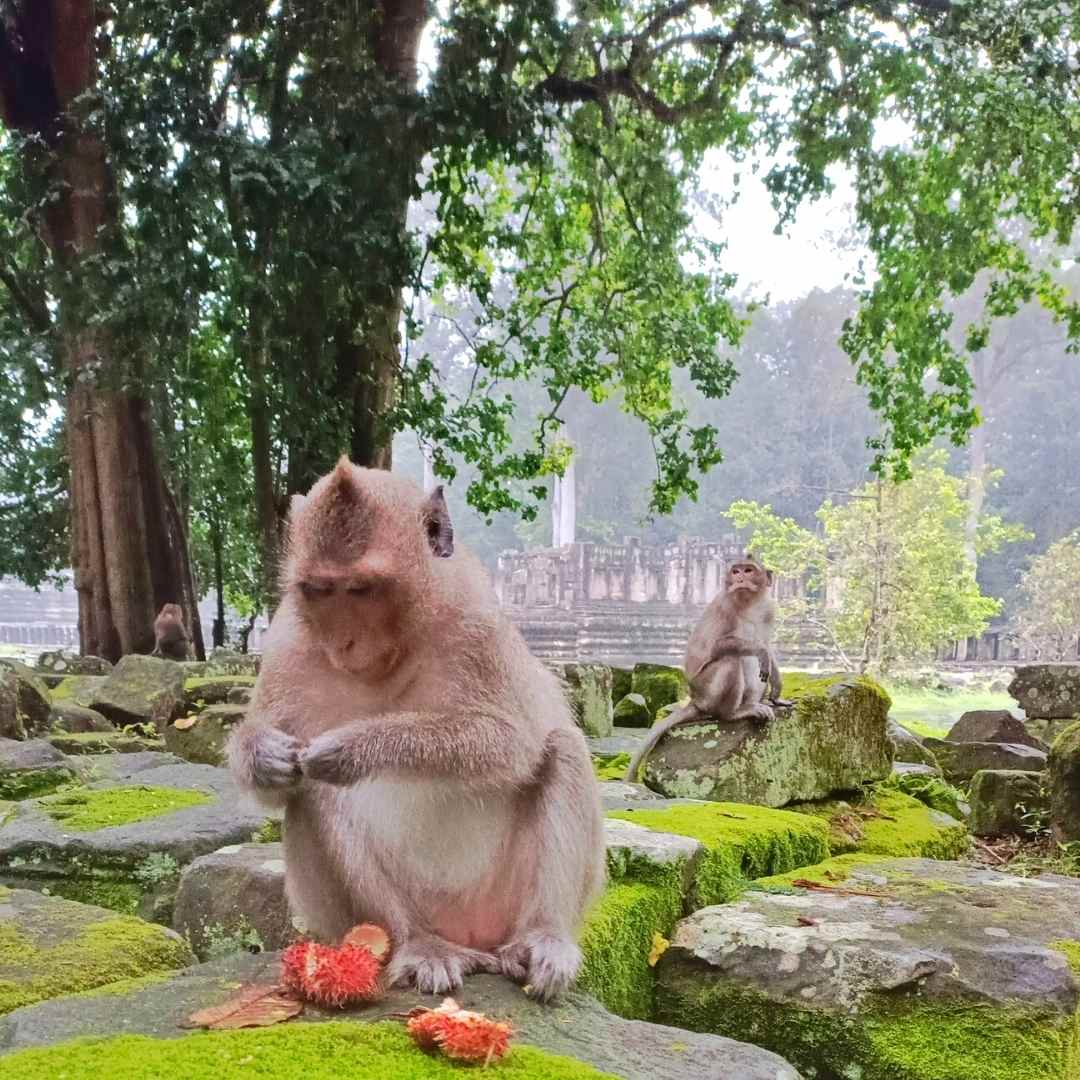
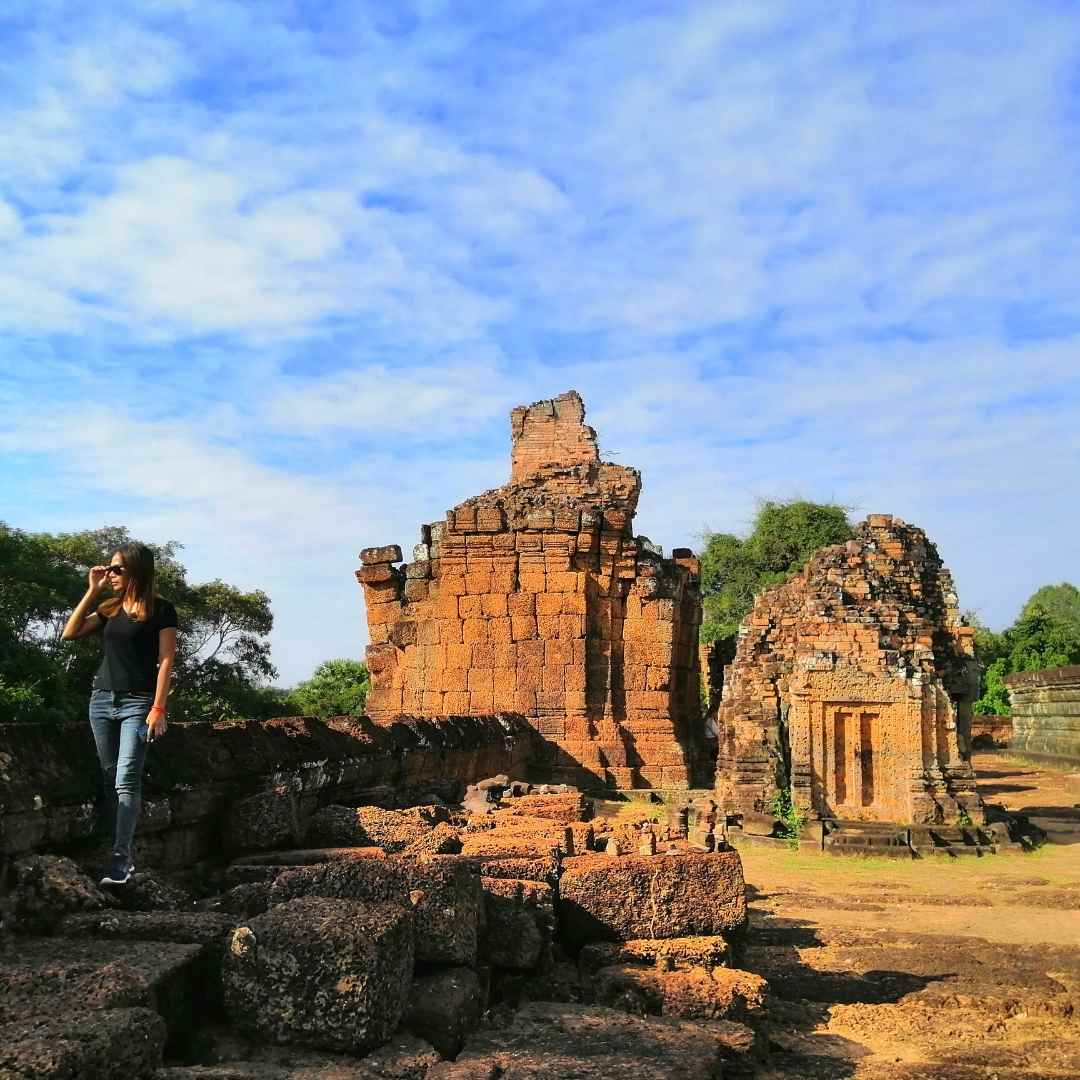
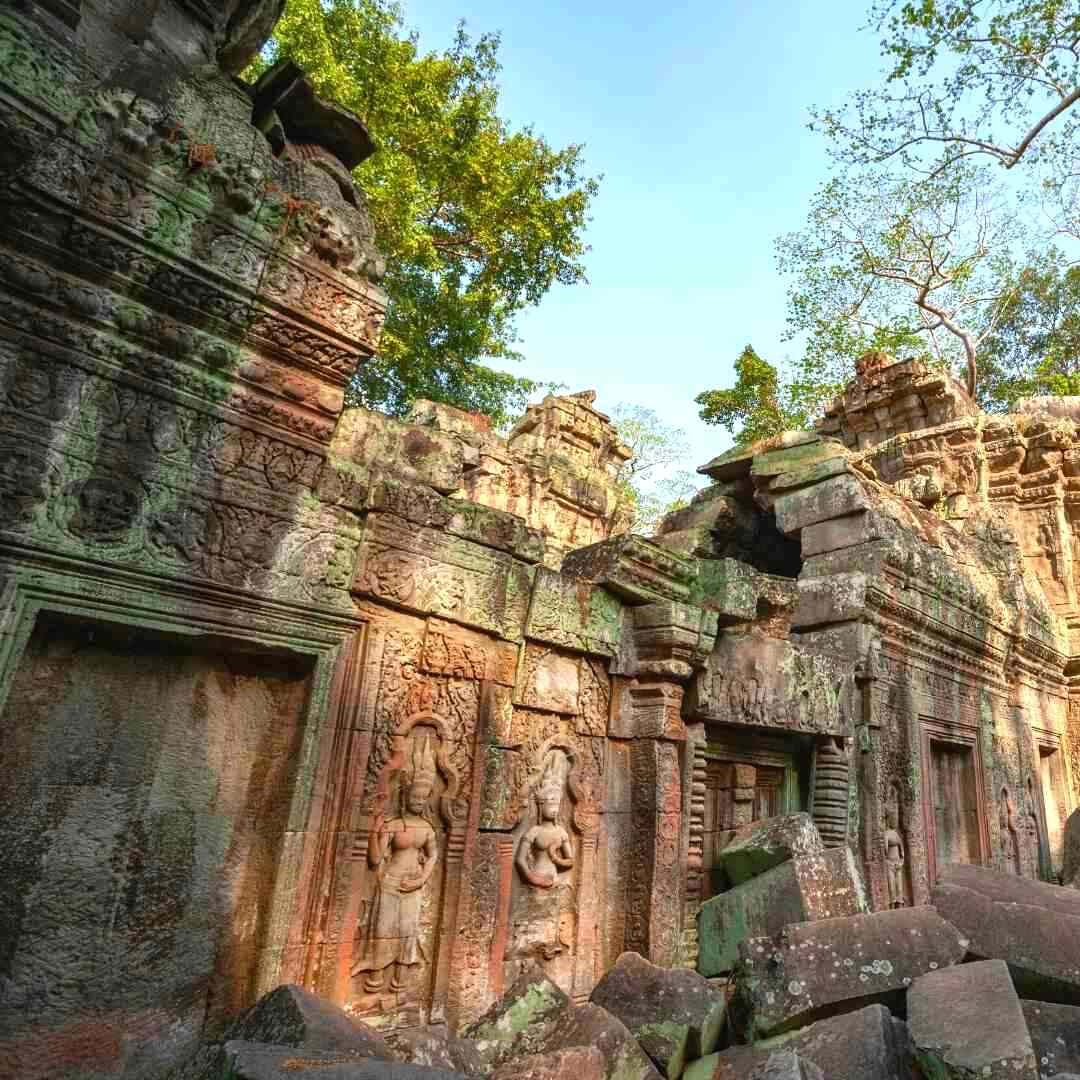
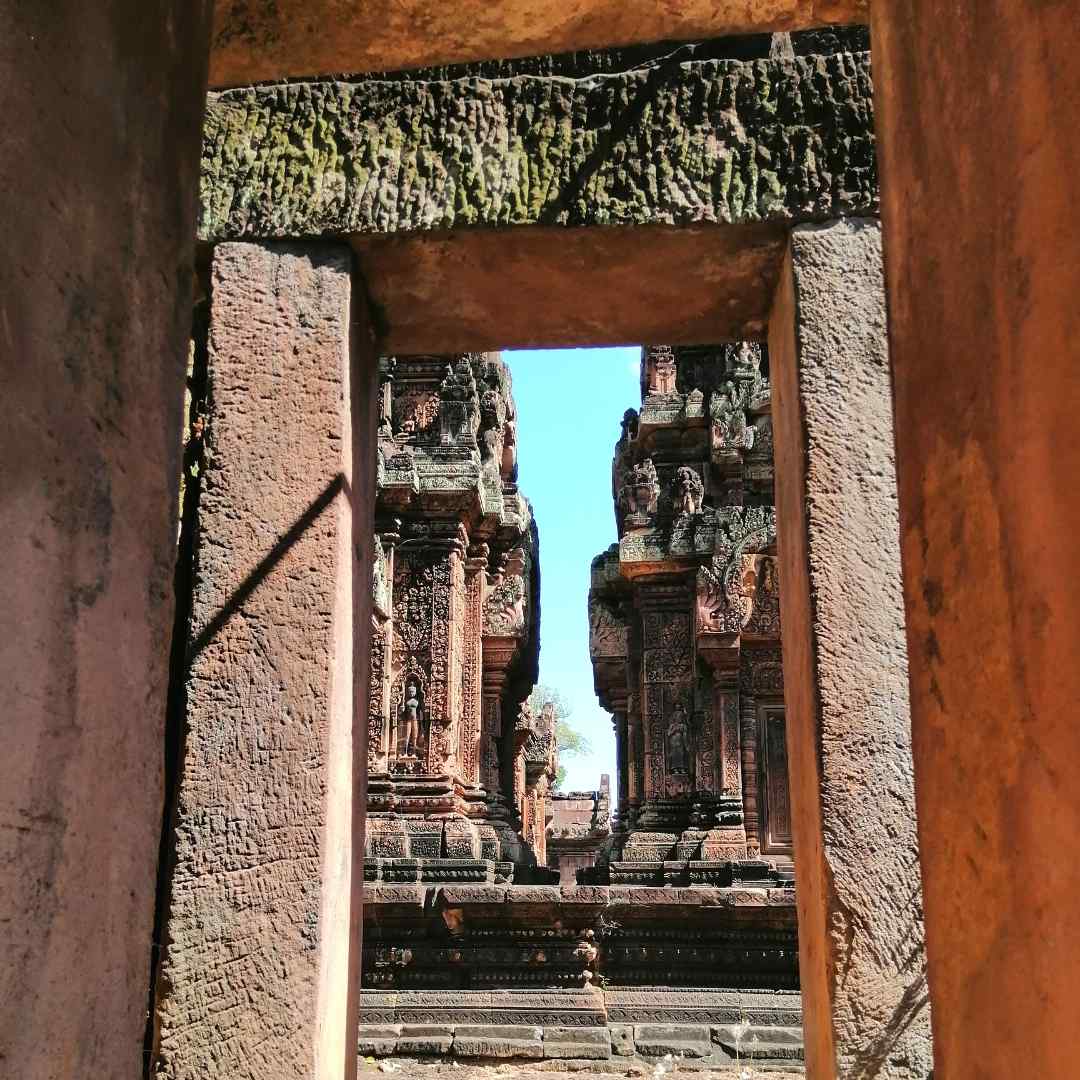
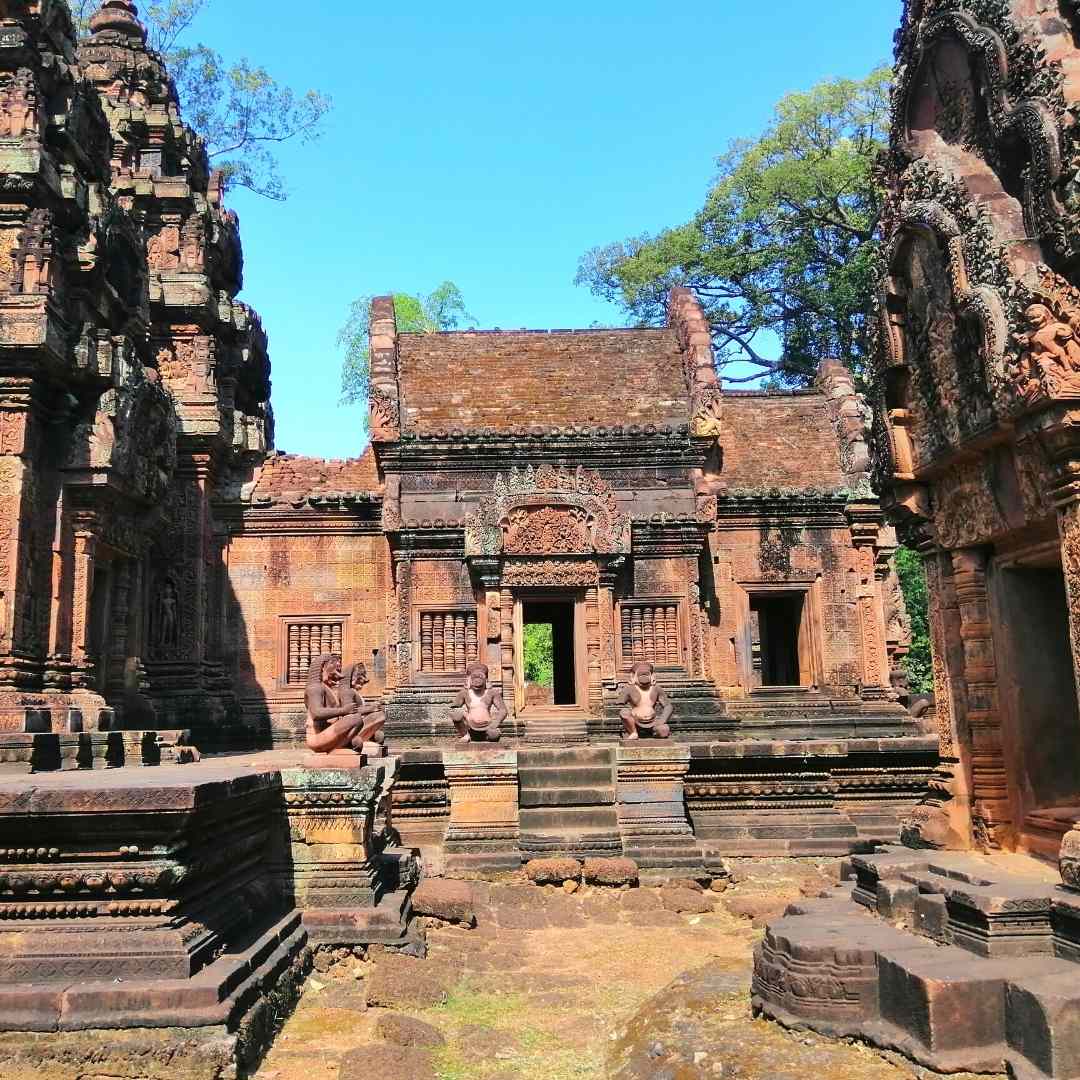
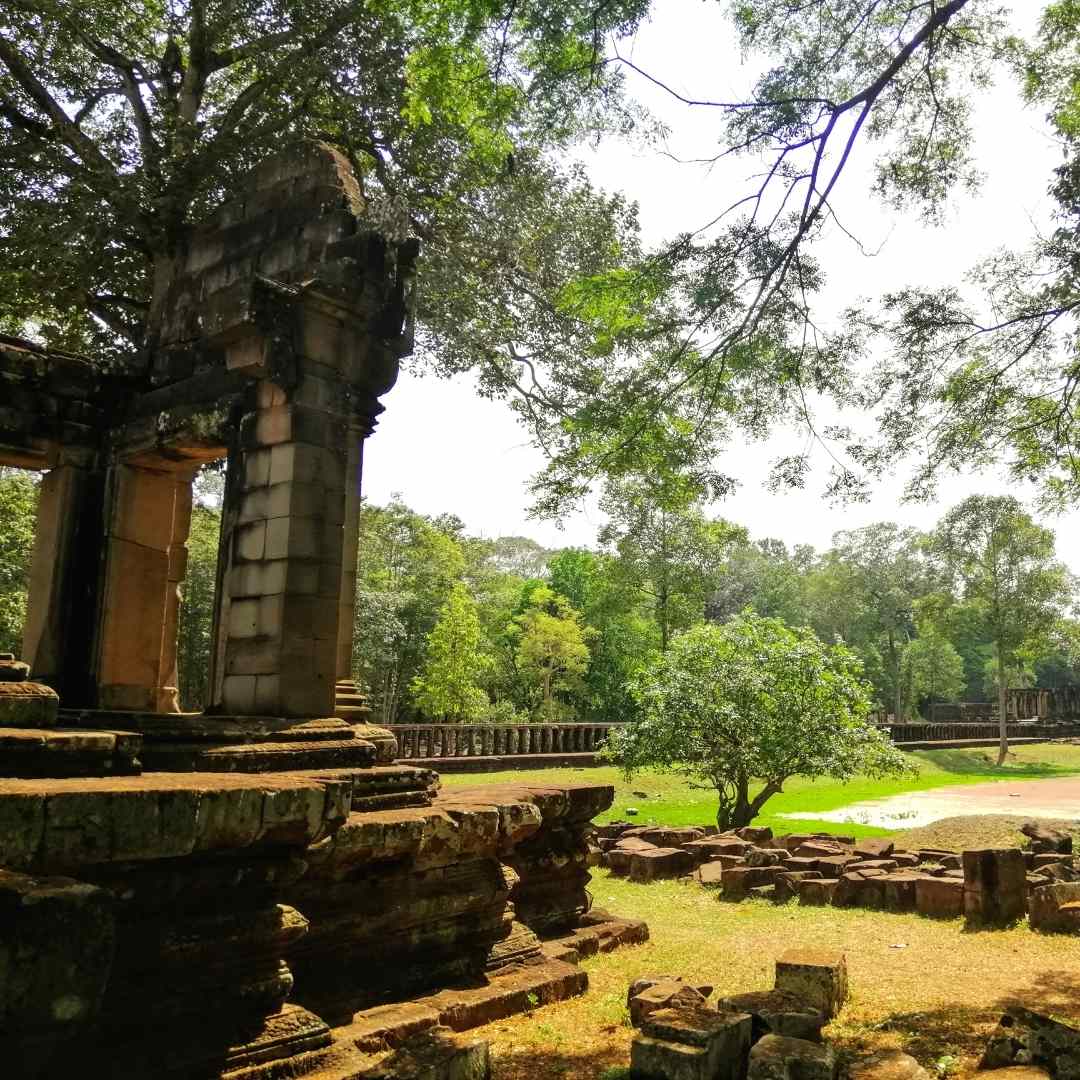
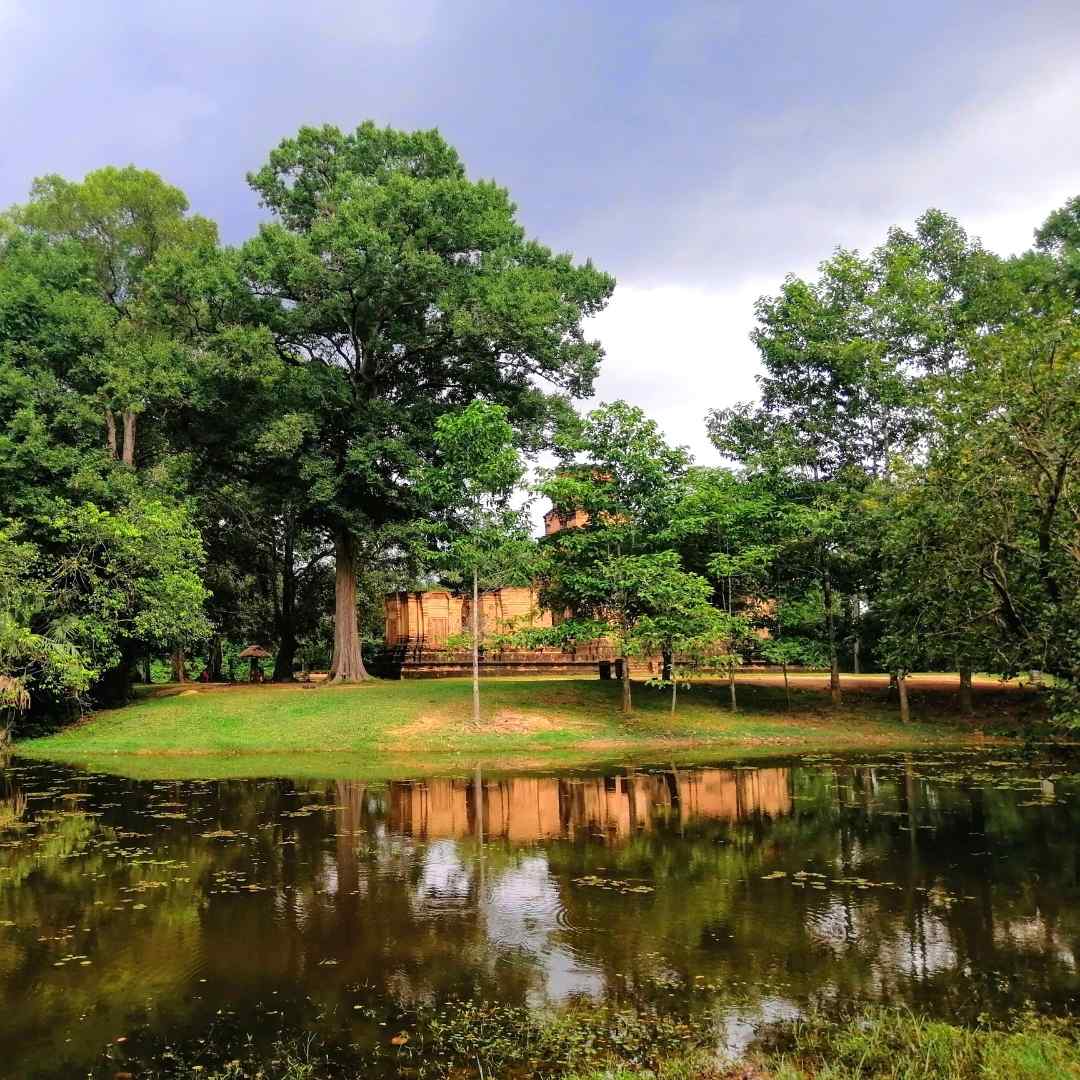
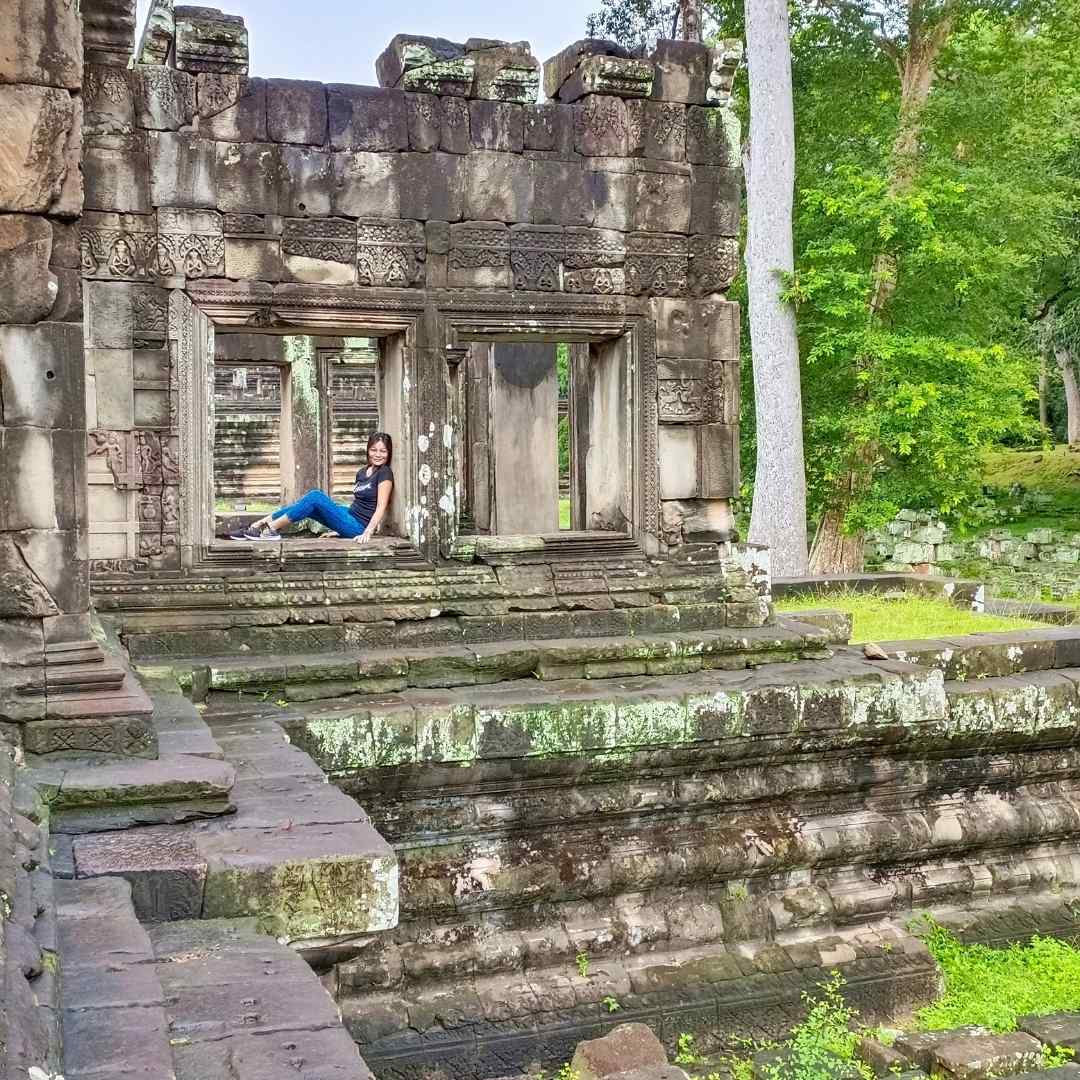
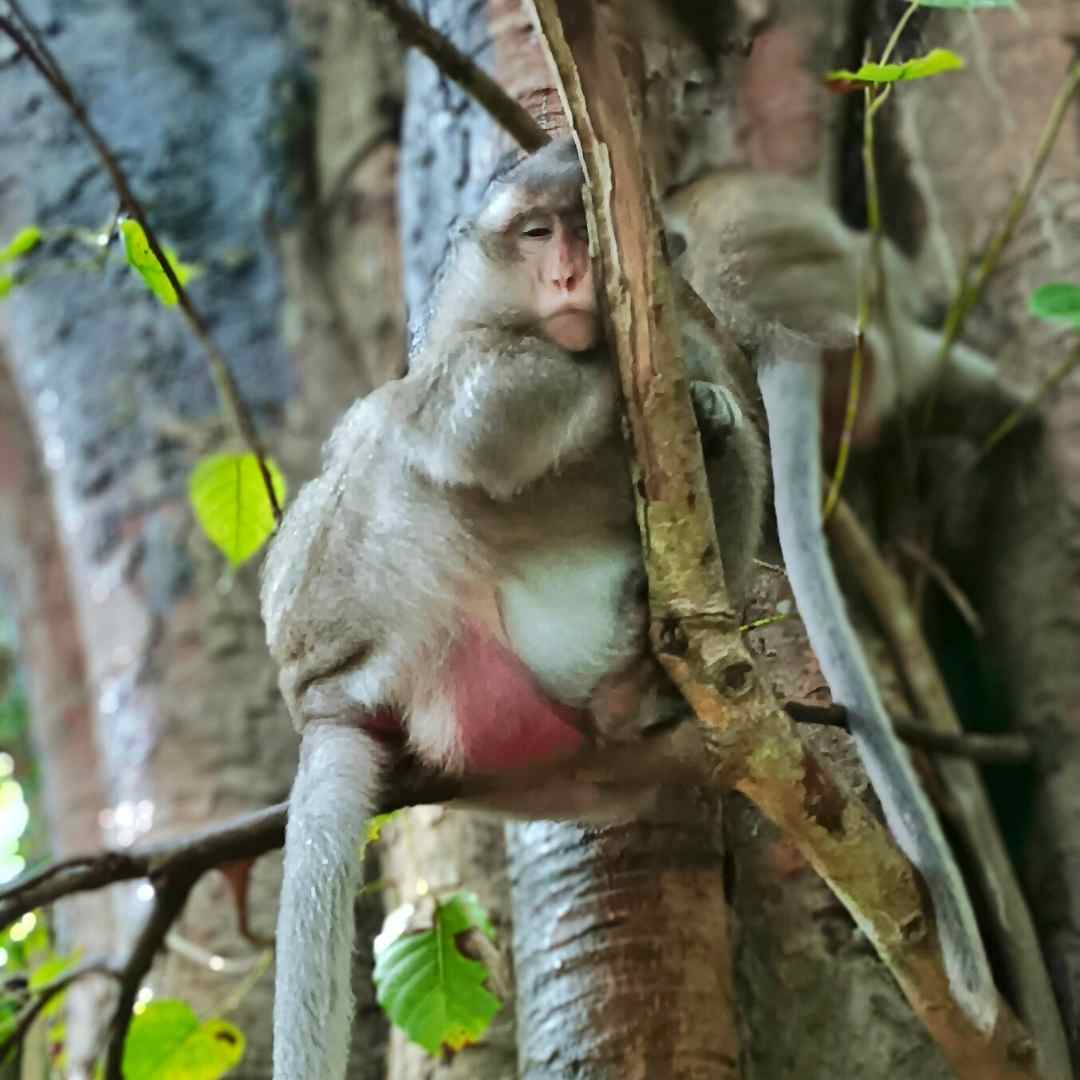
![1-day Angkor Wat GRAND LOOP Private tour with air-con minivan [with the famous Banteay Srei temple] at Preah Khan Temple entrance - front view](https://mysiemreaptours.com/wp-content/uploads/2022/10/1-day-Angkor-Wat-GRAND-LOOP-Private-tour-with-air-con-minivan-with-the-famous-Banteay-Srei-temple-at-Preah-Khan-Temple-entrance-front-view-100x100.jpg)
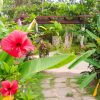
![Rural Angkor Wat Bike tour Escape [Mind-Blowing Adventure through Rural Angkor Wat on Two Wheels]](https://mysiemreaptours.com/wp-content/uploads/2023/02/Rural-Angkor-Wat-Bike-tour-Escape-Mind-Blowing-Adventure-through-Rural-Angkor-Wat-on-Two-Wheels.jpg)

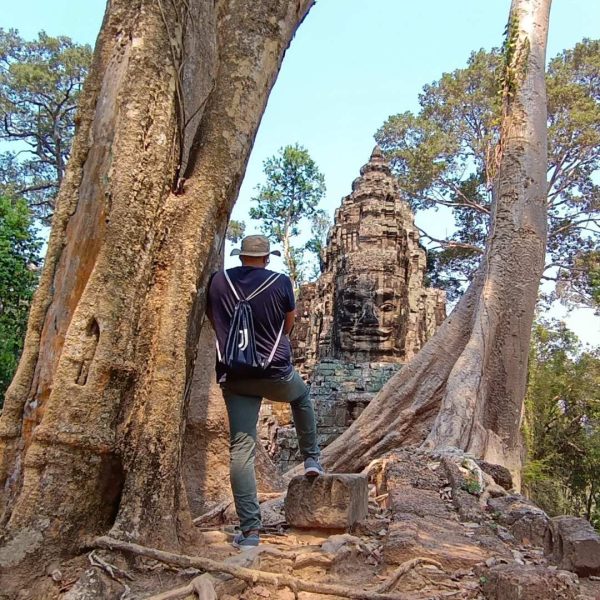
Zane I. –
I stumbled across this company on Instagram and decided to give it a try. I am so glad I did. The company was very professional. They were so accommodating and helpful. We had a great experience on our tour, the guides were very knowledgeable, and the tour was fascinating. I would highly suggest this company to anyone looking for a guided tour through Angkor.
Tiziano G. –
I have always wanted to explore the temples of Angkor. I was able to book my experience on Explore Angkor and I am glad I did. I had a private, 2-day guided tour through Angkor. I was able to see all the temples that I wanted to see, and I felt like I had a personal guide. We were able to visit lesser-known temples, and it was so much fun!
Johnny Stockwell –
What a tour! Fantastic experience..a magical one! The live adventure tour gives you all you need to see (and more) in this fabulous place! Worth a visit, worth a tour!